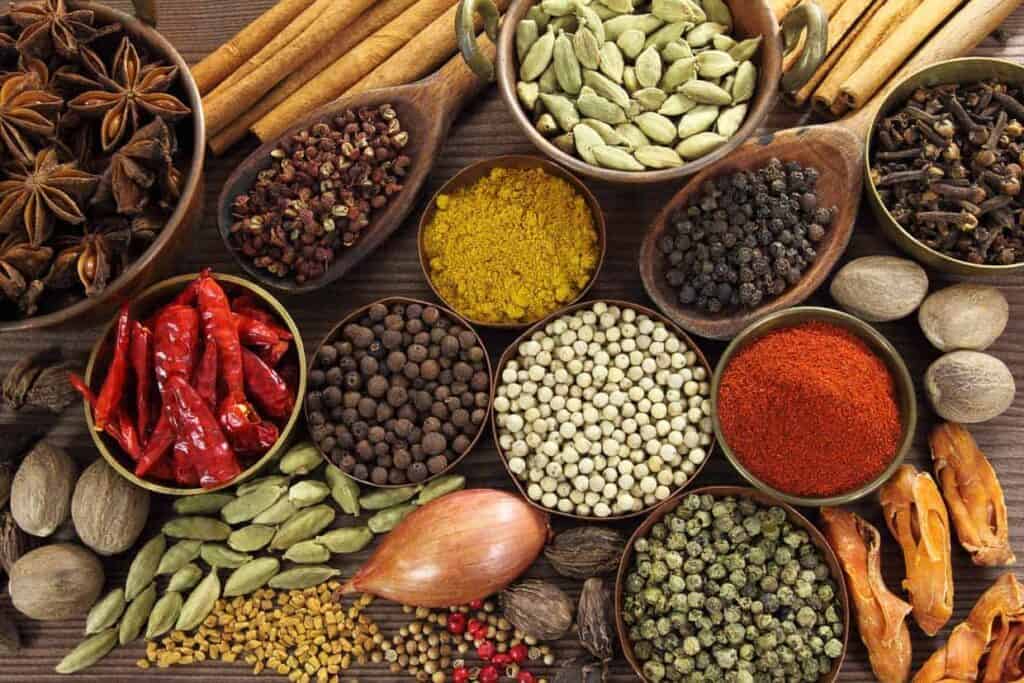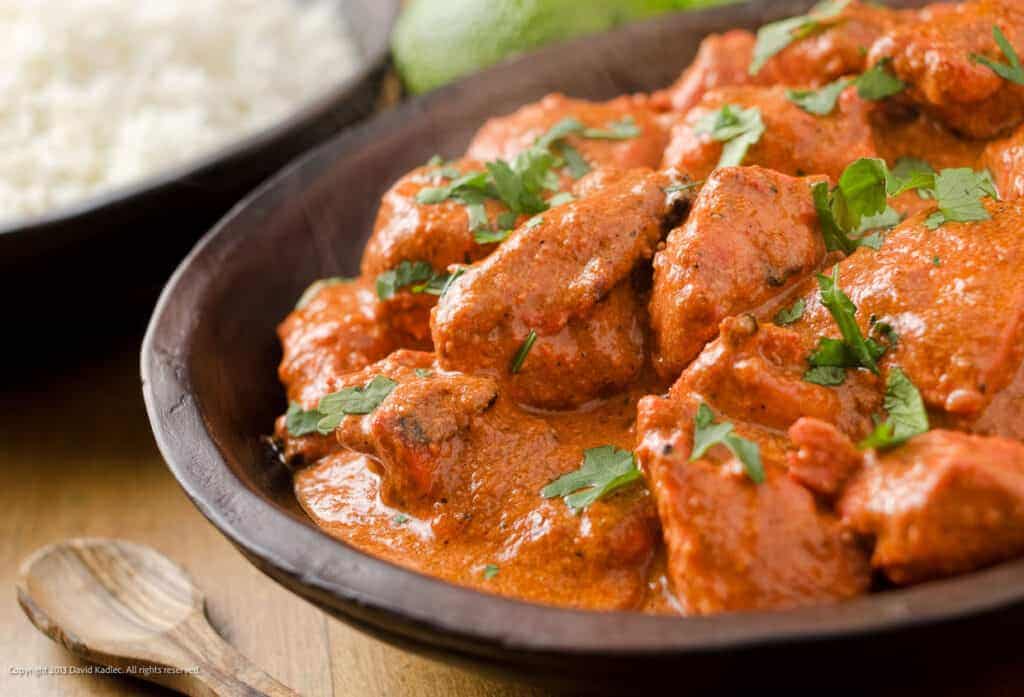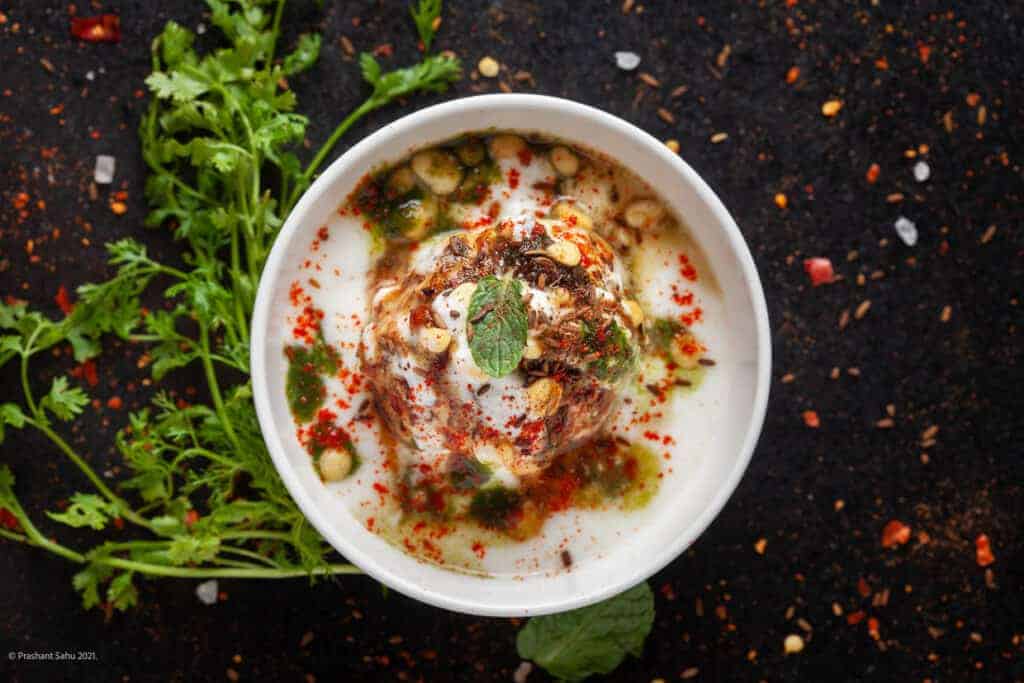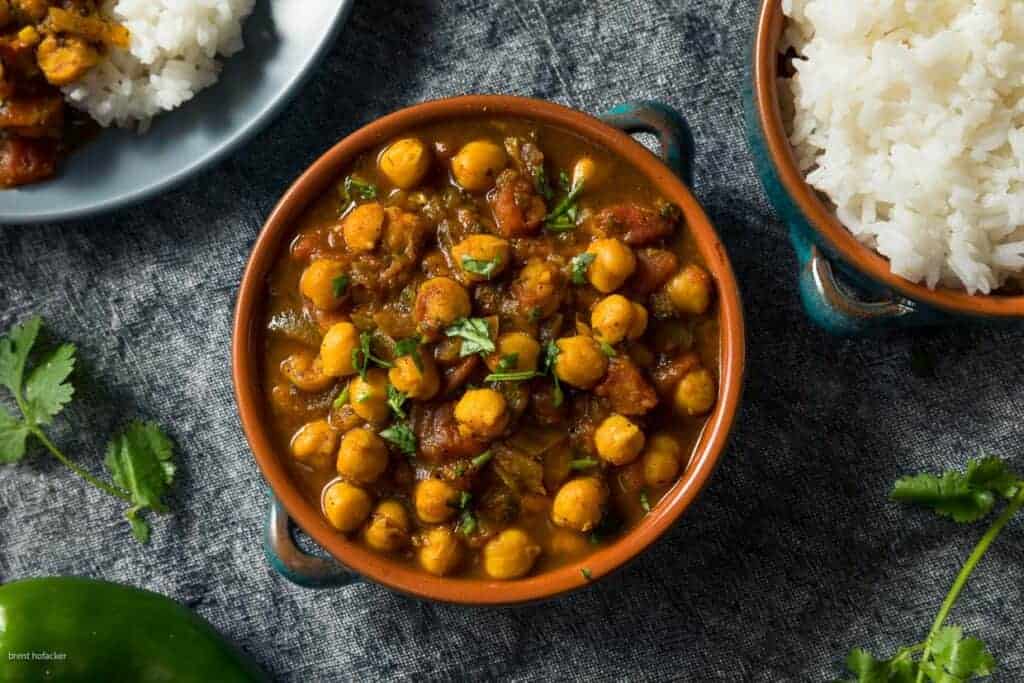Indian cuisine is enchanting and its magic is deeply rooted in the vibrant spices that flavor its dishes. When you dip your spoon into a bowl of aromatic curry or take a bite of a sumptuous biryani, you embark on a flavor journey unlike any other. Dive into this colorful world and discover the allure of Indian spices so you can use them in your kitchen.

The central players
While the Indian spice universe is vast and covers multiple regional cuisines, some key players feature widely. These spices are found throughout the various cuisines of India, both in seasoning blends and used individually.
Amchoor or amchur: This tart powder comes from dried, unripe mangos. It adds acidity to dishes like curry or soup. It can also tenderize meat and poultry.
Asafoetida: It has a strong smell that may be offputting to some, but once cooked, it imparts a mild oniony-garlic flavor making it an excellent enhancer for lentils and vegetables. If you’re cooking for someone who is gluten-free, be sure to look for a gluten-free preparation.
Cardamom: There are two variants, green, which is sweet and menthol-y, and black, which is earthy and smoky. Cardamom is one of the essential spices in the savory seasoning mixture garam masala and in desserts like rice pudding and drinks like chai.
Chile peppers: Indian recipes use both red and green chiles, and they are used fresh or dried and crushed or ground. The peppers range from mild, like Kashmiri chile pepper, to very hot, like the naga chile pepper. Ground red chili powder, such as Kashmiri chili powder, has a brilliant red hue that adds natural food coloring and a smoky flavor.

Clove: The spicy, somewhat sweet, and warm flavor of cloves adds depth to dishes, especially in meat preparations. Cloves are one of the critical ingredients in garam masala.
Coriander: Coriander seeds, the seeds of the cilantro plant, are used either whole or ground to add a floral, citrusy note and a gentle, nutty warmth to countless dishes in Indian cuisine. You’ll find its sweet, earthy notes in vindaloo, Malabar curry, and many lentil dals. Coriander is often paired with cumin as the two balance and complement each other.
Cumin: This versatile spice lends a warm, earthy aroma and a mild bitterness that counteracts sweetness in dishes. Indian cooks often toast whole cumin seeds in oil at the beginning of a recipe and add ground cumin later in the process. It is found in many spice blends like garam masala and can be added individually to dishes, including soups and curries.
Fenugreek: Because it is slightly bitter, fenugreek enhances sweetness in dishes and is a popular ingredient in North Indian cuisine.
Mustard Seeds: These small seeds burst with a nutty, mildly pungent flavor, adding an unexpected layer to simple dishes. They’re often tempered in hot oil to release their flavor. They flavor dishes ranging from chutneys to curries and salads.
Nigella seeds: These tiny black seeds add slight bitterness and crunch. You’ll often find them in breads and pickles.
Turmeric: Turmeric gives every dish it goes into a vibrant yellow color. It’s what gives the standard curry powder blend you see in supermarkets its trademark yellow hue. The flavor is earthy, slightly bitter, and reminiscent of mustard. It’s common in drinks like turmeric tea, curries and even in desserts like kulfi, a frozen milk-based dessert.

The magic is in the blending
Success in Indian cooking is all about mastering the balance of flavors. Many Indian recipes call for spice blends, which are somewhat standard but vary from region to region and even family to family.
A few of the most common spice blends are garam masala, sambar powder, biryani masala, and chaat masala. These blends are a mix of several spices, each adding its unique flavor to create a far more nuanced and flavorful combination than the sum of its parts.
Garam masala: Regarded as the backbone of Indian spice blends, garam masala is a warming mix, often including coriander, cumin, cardamom, cloves, black pepper, cinnamon, and nutmeg. This blend adds a level of depth and complexity to a variety of Indian dishes. You’ll find garam masala in dishes like chana masala, butter chicken, Bombay potatoes and samosas.
Sambar masala: A signature of South Indian cuisine, sambar masala is a tangy, spicy blend of coriander seeds, cumin, red chiles, curry leaves, asafoetida, fenugreek, and turmeric. It often enhances lentil-based soups.
Biryani masala: This fragrant mix, crucial to preparing the celebrated rice-and-meat biryani, typically includes cloves, cardamom, cinnamon, nutmeg, mace, and bay leaf. It lends the rice dish a unique, robust, sweet-spicy flavor and aroma.
Chaat masala: This magical spice is synonymous with the street food culture of India that bears its name. It is a tangy and flavorful spice blend used in savory Indian snacks called chaat. It typically consists of a mix of dried mango powder, cumin, coriander, black salt, ginger, and other spices. Chaat masala adds a zesty and aromatic touch to various street foods and snacks like frankies and pani puri, and is also delicious sprinkled over fruit or vegetables.
“I love to use garam masala at the end of the cooking process, it’s perfect to sprinkle in a curry, soup or lentil dish just before you finish cooking. By incorporating it at this stage, the fragrant notes of cumin, coriander, cardamom, and other spices are preserved, ensuring their full flavor impact on the final dish.”
— Mandy Applegate, Splash of Taste

What about curry powder?
The yellow-hued spice blend you’ll find in American supermarkets labeled as curry powder is a spice blend that was created by the British during the colonial era after they first encountered Indian cuisine. It was an attempt to replicate the flavors and aromas of Indian dishes using a convenient pre-mixed spice blend.
What we call curry powder typically includes spices like coriander, cumin, turmeric, fenugreek, mustard seeds, ginger, and cardamom, all commonly used in Indian cooking, though not necessarily in that specific combination. In the West, we may refer to a saucy, Indian-inspired dish seasoned with this British-inspired spice blend as curry, but in India, the term refers not to the spice blend but to a dish composed of meat and vegetables in a flavorful sauce.

Wrapping up
The world of Indian spices is vast and complex, but once you understand how these seasonings work together in different combinations and spice blends, you can begin to unlock the secrets to not just cooking Indian dishes but creating culinary experiences that captivate the senses. The allure of Indian spices lies in their ability to transform simple ingredients into extraordinary creations, turning each meal into a celebration of flavors.
Robin Donovan is the author of more than 40 cookbooks, including the bestselling Campfire Cuisine, Ramen Obsession, and Ramen for Beginners. A food writer, recipe developer, and food photographer, she is the creator of the food blog All Ways Delicious, where she shares easy recipes for the best dishes from around the world.
This article originally appeared on Food Drink Life.
